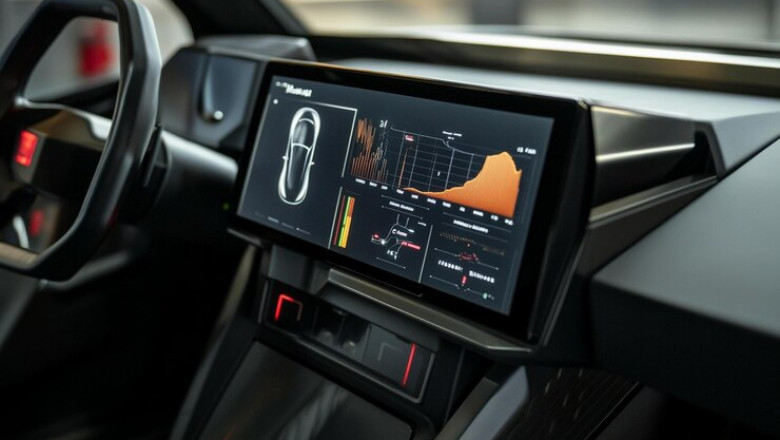views
Automotive smart displays have transformed modern driving experiences by integrating infotainment, navigation, vehicle data, and advanced driver assistance systems (ADAS) into digital dashboards. These displays, ranging from LCDs to OLED and AMOLED technologies, are central to enhancing user interaction and vehicle intelligence. However, despite their rising adoption in luxury and mid-range vehicles, the automotive smart display market is encountering significant threats that could slow its momentum and profitability.
Cybersecurity Threats and Data Breaches
As vehicles become more connected via cloud platforms, 5G, and IoT networks, the automotive smart display ecosystem faces heightened cybersecurity threats. Hackers target infotainment systems to access user data or gain control of vehicle functions. A compromised smart display can be a gateway to more critical systems like braking or engine control modules. Automakers must invest heavily in cybersecurity protocols and regular software updates, which increases development costs and prolongs time-to-market cycles. Furthermore, any breach can result in legal liabilities, reputational damage, and consumer trust erosion.
Supply Chain Disruptions and Semiconductor Shortages
The global semiconductor shortage has exposed a major vulnerability in the automotive smart display market. These displays require advanced chips and electronic components, many of which are sourced from limited global suppliers. Any disruption—caused by geopolitical tensions, natural disasters, or pandemics—can delay production timelines and inflate costs. In particular, smart display manufacturers in Asia, responsible for a major share of production, are at risk of facing factory shutdowns or shipment delays. The lack of component availability directly affects automakers’ ability to launch new vehicles with integrated displays on schedule.
Technological Obsolescence and Innovation Race
Rapid advancements in display technology also present an internal threat. Companies that fail to keep pace with evolving consumer expectations for features like high-resolution screens, haptic feedback, flexible displays, or AI-driven interfaces risk falling behind. Innovation in smart displays is not only expensive but also requires ongoing R&D investments, partnerships with tech firms, and readiness for quick pivots in product strategies. Falling behind in this innovation race can lead to reduced market share and brand relevance, especially among tech-savvy buyers.
Regulatory and Compliance Challenges
Governments and transportation authorities are increasingly regulating vehicle interfaces to prevent driver distraction and ensure road safety. As smart displays become larger and more interactive, they risk being categorized as potential hazards under new regulations. For instance, legislation may limit display sizes, touch interactions, or screen brightness levels. Compliance with varied regional standards—from North America to Europe and Asia—complicates product design and rollout, posing regulatory threats that delay product approvals and increase engineering complexity.
Cost Constraints in Emerging Markets
While developed countries embrace high-end smart displays, emerging markets remain highly cost-sensitive. The integration of smart displays into entry-level or mid-tier vehicles is often constrained by affordability. In markets like India, Brazil, or Southeast Asia, price points heavily influence buying decisions. OEMs face the threat of reduced adoption if smart display features significantly increase the vehicle’s price. This affects volume sales and discourages manufacturers from investing in localized display solutions, slowing down penetration in these promising markets.
Environmental and Sustainability Threats
The production of automotive smart displays involves rare earth metals, plastic components, and significant energy usage—all contributing to environmental degradation. As sustainability becomes a core concern in automotive design, manufacturers are being scrutinized for their ecological footprint. The industry faces mounting pressure to develop eco-friendly displays, improve recyclability, and reduce electronic waste. Failure to meet sustainability expectations can result in public backlash, regulatory penalties, and limited support from ESG-focused investors.
Competitive Pressures and Market Fragmentation
The automotive smart display market is highly fragmented with major players like LG Display, Panasonic, Visteon, Continental AG, and Denso competing with newer tech entrants. This competition leads to price wars, thin margins, and a constant struggle to differentiate. As more companies enter the space, the threat of consolidation or acquisition increases. Startups and smaller firms often lack the resources to compete on scale and innovation, making them vulnerable to market exit or forced mergers.
Conclusion: Navigating a Threat-Ridden Landscape
The automotive smart display market stands at a critical juncture. While the demand for digital interfaces in vehicles is growing, the market is also confronting a wide array of threats—from cybersecurity and component shortages to regulatory hurdles and environmental concerns. To thrive, stakeholders must adopt a balanced strategy that blends innovation with resilience, global sourcing with local adaptation, and growth with sustainability. The future of automotive smart displays depends not just on technology, but on how well these imminent threats are identified, managed, and overcome.




Comments
0 comment